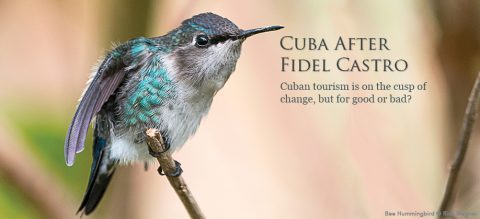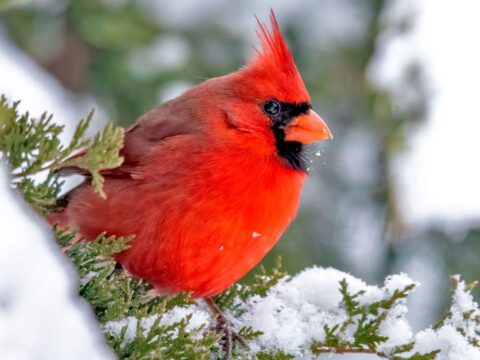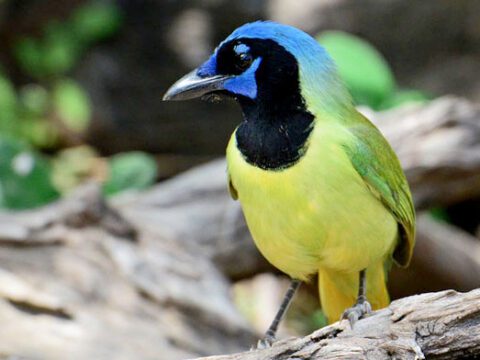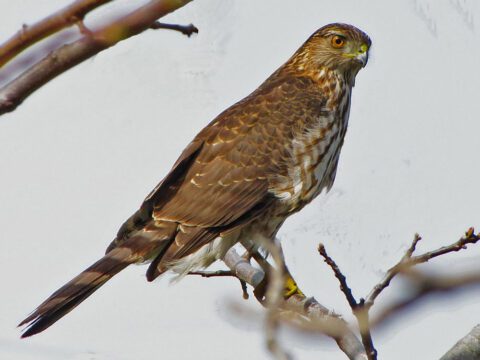Merlin Bird ID App: Q&A With Jessie Barry
By Gustave Axelson
January 15, 2014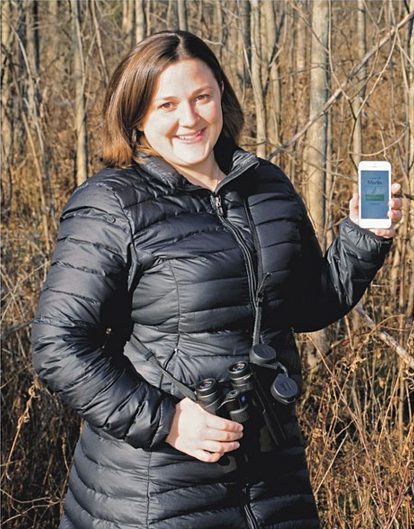
“What’s that bird?” It’s long been one of the most daunting questions for would-be birders, often requiring a search through a 500-page field guide. But what if you could identify a bird with just a few taps on your smartphone? This year, the Cornell Lab of Ornithology is launching a revolutionary new app that makes birding as easy as playing a game of 20 questions. Called Merlin, it’s the product of a three-year National Science Foundation–funded computer-science project aimed at creating a handheld, customized bird-identification application. Jessie Barry, Merlin project leader and member of the Cornell Lab’s famed Sapsuckers birding team, talked to us about this big step forward in making birding easier and more accessible. — Gustave Axelson
What is Merlin?
It’s a bird identification tool designed primarily for beginning birders and people watching birds for the first time. Merlin asks you a series of questions about what your bird looks like, what size it is, where you saw it, and then delivers a short list of possible species. A lot of people glance at a bird feeder and ask, “What’s that bird?” We wanted to develop an app that would make it as easy as possible for a beginner to identify a bird. A lot of birders know family members or friends who seem like they’d be a good fit for getting into birding, but they get easily frustrated at trying to tell, say, a sparrow from a finch. Merlin is a great app for birders to pass along as a tool for helping novices experience more success early on with identifying the birds they see.
So Merlin is only an app for beginners?
Not necessarily. It’s a good tool for any birder who’s been frustrated by flipping through field guides, or Googling “little brown bird.” What makes Merlin really awesome, in my opinion, is that it provides a targeted list of the birds you’re most likely to see in your area on that day. It’s a tailored experience.
How does Merlin do that?
Merlin pulls customized bird ID suggestions from eBird, by cross-referencing your answers with a massive database of bird observations reported to eBird over the past three years from roughly a 50-mile radius of your location. And then, along with the species names, you can read text about the bird’s appearance, behaviors, and habitat preferences and see stunning photos to help you identify the bird.
Can you get sounds, too?
Yes, you can listen to the bird’s songs and calls with audio files pulled from the Cornell Lab’s Macaulay Library, and you can also see the species’ range maps pulled from the Birds of North America Online. [update 2/8/22: Birds of North America Online is now part of Birds of the World.] That’s one of the really cool things about Merlin, being able to pull together many strengths of the Cornell Lab into one tool to help people learn more about birds.
How do people get Merlin?
You can download Merlin from the App Store. If you visit the Merlin website at merlin.allaboutbirds.org you will find specific directions on how to download the app. It’s designed for smartphones, but it works on tablets, too. Currently, it works on iOS devices with iOS 7, but soon we’ll be releasing an Android version.
How much does it cost?
It’s free! Part of the mission of the Cornell Lab is to make birds more accessible to people. Once people can identify birds, a whole new world opens up to them. Suddenly they want to identify another and another. And they’re learning more about the birds they identify, such as where they live and what they need to survive. People are more motivated to protect the things that they know and care about.
Will there be future updates to Merlin?
Yes. Right now Merlin makes recommendations for more than 3,000 species (as of May 2019), which covers the birds found throughout the United States and Canada, Central America, the Caribbean, parts of South America, Europe, and India. We’re working hard to add more species, and there will be more developments coming. Plus, Merlin will be constantly improving itself. Every time someone logs a bird ID by clicking “This Is My Bird,” Merlin saves those results to compute into future recommendations. So Merlin will continue to get smarter as more people use it.

All About Birds
is a free resource
Available for everyone,
funded by donors like you
American Kestrel by Blair Dudeck / Macaulay Library
